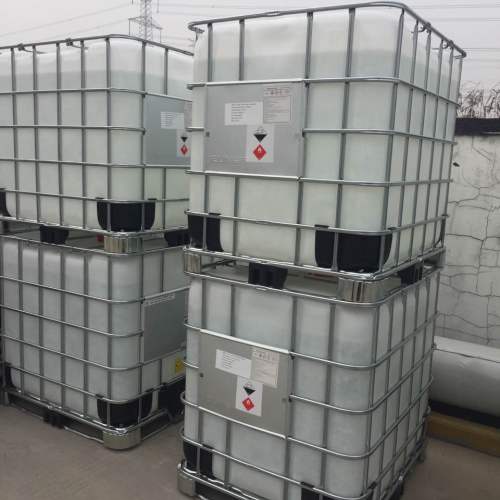
 Jiangsu, China
Jiangsu, China
 Jiangsu, China
Jiangsu, China
Send Email



Acetic Acid / CAS 64-19-7
OVERVIEW
Uses
- Allyl Alcohol Allyl Alcohol
- 1,4-Phenylenediamine 1,4-Phenylenediamine
- Tert-Butyl Acetate Tert-Butyl Acetate
- Sodium Diacetate Sodium Diacetate
- Sodium Acetate Sodium Acetate
- Calcium Acetate Calcium Acetate
- N-Phenylacetamide N-Phenylacetamide
- Ethenone Ethenone
- P-Terphenyl P-Terphenyl
- Sorbinic Acid Sorbinic Acid
- 3-Aminoacetanilide Hydrochloride 3-Aminoacetanilide Hydrochloride
- Artemether Artemether
- 6-Hydroxypurine 6-Hydroxypurine
- Triacetin Triacetin
- 2-Ethylhexyl Acetate 2-Ethylhexyl Acetate
- 2-Ethylhexyl Acetate 2-Ethylhexyl Acetate
- Propyl Acetate Propyl Acetate
- Bromhexine Hydrochloride Bromhexine Hydrochloride
- Acetic Anhydride Acetic Anhydride
- Acetyl Triethyl Citrate Acetyl Triethyl Citrate
- Crotonaldehyde Crotonaldehyde
- Sorbinic Acid Sorbinic Acid
- Enoxolone Enoxolone
- Bromoacetic Acid Bromoacetic Acid
- 1-Methoxy-2-Propyl Acetate 1-Methoxy-2-Propyl Acetate
- Ethylene Glycol Monoethyl Ether Acetate Ethylene Glycol Monoethyl Ether Acetate
- 2-Butoxyethyl Acetate 2-Butoxyethyl Acetate
- Isopropyl Acetate Isopropyl Acetate
- Isobutyl Acetate Isobutyl Acetate
- Ethyl Acetate Ethyl Acetate
- Methyl Chloroacetate Methyl Chloroacetate
- Chloroacetic Acid Chloroacetic Acid
- Ethyl 3-Hydroxyhexanoate Ethyl 3-Hydroxyhexanoate
- Rosalin Rosalin
- Ethyl Bromodifluoroacetate Ethyl Bromodifluoroacetate
- Cis-3-Hexenyl Acetate Cis-3-Hexenyl Acetate
- Jasmone Jasmone
- Sodium Acetate Trihydrate Sodium Acetate Trihydrate
- Potassium Acetate Potassium Acetate
- Zinc Acetate Zinc Acetate
- Acyclovir Acyclovir
- 3-Fluorobenzoic Acid 3-Fluorobenzoic Acid
- Isopropenyl Acetate Isopropenyl Acetate
- Acetylacetone Acetylacetone
- Nifedipine Nifedipine
- Isoamyl Acetate Isoamyl Acetate
- Acetonitrile Acetonitrile
- 2-Acetylpyrrole 2-Acetylpyrrole
- Trimellitic Anhydride Trimellitic Anhydride
- Manganese(Ii) Acetate Manganese(Ii) Acetate
- Chromic Acetate Chromic Acetate
- 4-Dihydroxybiphenyl 4-Dihydroxybiphenyl
- Lithium Acetate Dihydrate Lithium Acetate Dihydrate
- Cesium Acetate Cesium Acetate
- Chlorhexidine Diacetate Chlorhexidine Diacetate
- 2-Nitrophenyl-Beta-D-Galactopyranoside 2-Nitrophenyl-Beta-D-Galactopyranoside
- X-Gluc X-Gluc
- Acetone Acetone
- 4-Vinylbenzyl Chloride 4-Vinylbenzyl Chloride
- Isosorbide Dinitrate Isosorbide Dinitrate
- 4-Bromo-4'-Iodobiphenyl 4-Bromo-4'-Iodobiphenyl
- Diketene Diketene
- Acetaminophen Acetaminophen
- Tetraacetylethylenediamine Tetraacetylethylenediamine
- Etidronic Acid Etidronic Acid
- 4-Chloro-2-Fluoroaniline 4-Chloro-2-Fluoroaniline
- 3,3'-Diindolylmethane 3,3'-Diindolylmethane
- (S)-Epichlorohydrin (S)-Epichlorohydrin
- Benzyl Acetate Benzyl Acetate
- Amlexanox Amlexanox
- Acifluorfen###Acifluorfen Acifluorfen###Acifluorfen
- Chloranil Chloranil
- Ethylene Glycol Diacetate Ethylene Glycol Diacetate
Packaging
| Pallets Packing | 20'FCL | 40'FCL | ||
| With | Without | With | Without | |
|
1000 KG/IBC Drum
99.5%
|
20 MT
|
--
|
--
|
--
|
|
1000 KG/IBC Drum
|
20 MT
|
--
|
--
|
--
|
Lead Time
14-30 days
Max Capacity
1200000 MT/Year
REQUEST A QUOTATION
SubmitDESCRIPTION
Acetic Acid
Properties:
Colorless transparent liquid, with pungent odor, sour smell and strong corrosivity. It is irritating and painful to the skin and causes blisters. Its vapor is toxic and easy to catch fire. It can be miscible with water, ethanol, glycerol, carbon tetrachloride and ether. It is almost insoluble in carbon disulfide. Its volume shrinks during solidification. The relative density is 1.049 and 16.7c Boiling point: 118 ℃, flash point: 39 ℃ (closed cup), refractive index: 1.3718, ignition temperature: 463 ℃, spontaneous combustion temperature: 427 ℃, lower explosion limit: 4.0%, upper explosion limit: 17.0%.
Purpose:
It is one of the most important organic raw materials. It is mainly used in products such as vinyl acetate, acetic anhydride, diketene, acetate, acetate, cellulose acetate and chloroacetic acid. It is not only an important raw material for synthetic fiber, adhesive, medicine, pesticide and dye, but also an excellent organic solvent. It is widely used in plastics, rubber, printing and other industries.
This product is strictly prohibited for food and feed processing.
Quality standard:
The products strictly comply with the national standard GB/T 1628-2008. The company has passed the quality and environmental management system certification, measurement management system certification and energy management system certification.
Item | Index | ||
Superior products | First Grade | Qualified products | |
Appearance | Transparent liquid, free of suspended solids and mechanical impurities | ||
Chroma≤ | 10 | 20 | 30 |
Acetic acid,% ≥ | 99.8 | 99.5 | 98.5 |
Water,% ≤ | 0.15 | 0.2 | —— |
Formic acid,%≤ | 0.05 | 0.1 | 0.3 |
Acetaldehyde,%≤ | 0.03 | 0.05 | 0.1 |
Evaporation residue,% ≤ | 0.01 | 0.02 | 0.03 |
Fe,%≤ | 0.00004 | 0.0002 | 0.0004 |
Potassium permanganate time,min≥ | 30 | 5 | —— |
Typical Properties
API & Intermediate > Synthetic Anti Infective Drugs
Food(Feed) Additives > Flavor Enhancer
GET SAMPLE
Submit- Overview
- Descriptions
- Sample
























